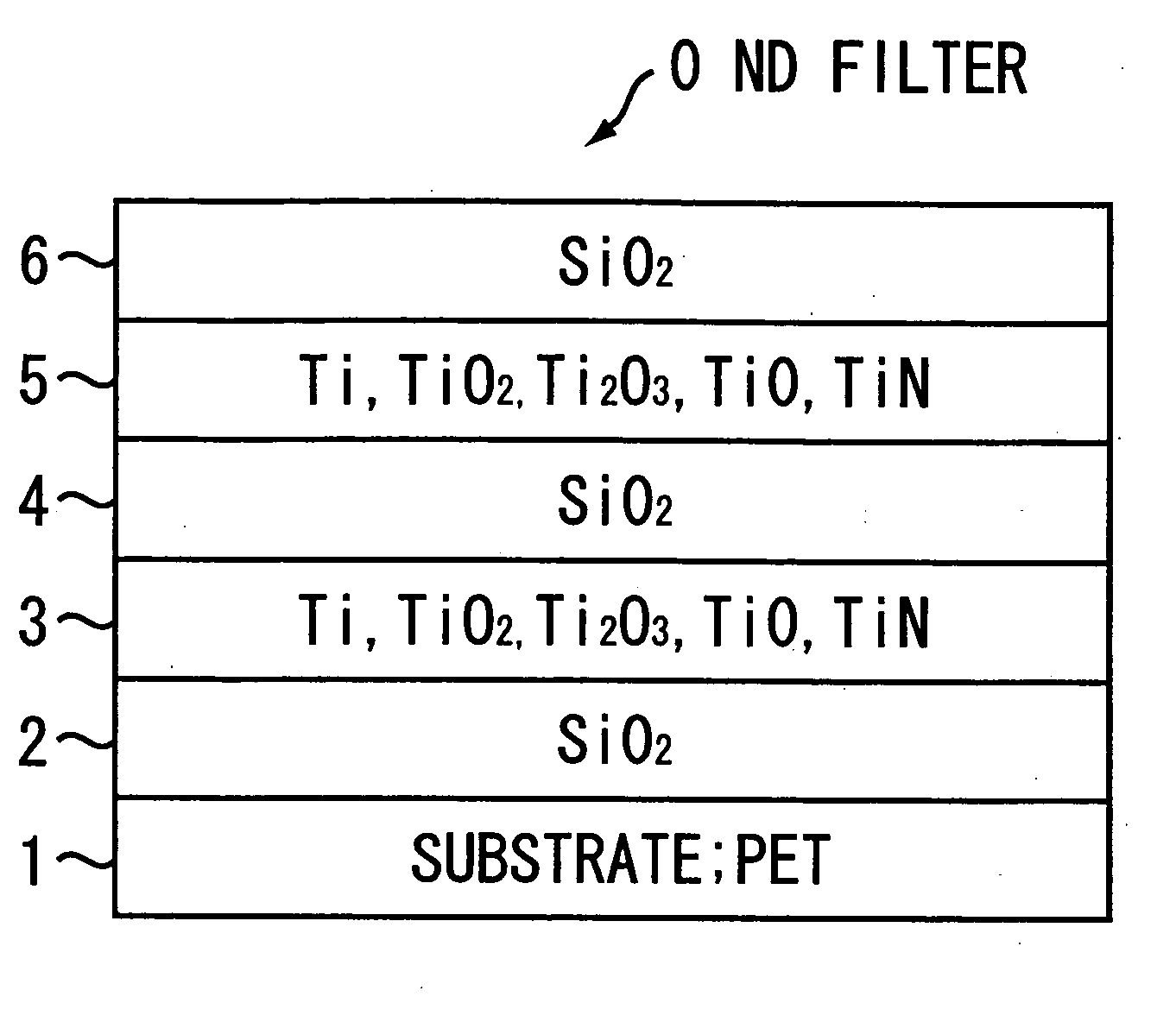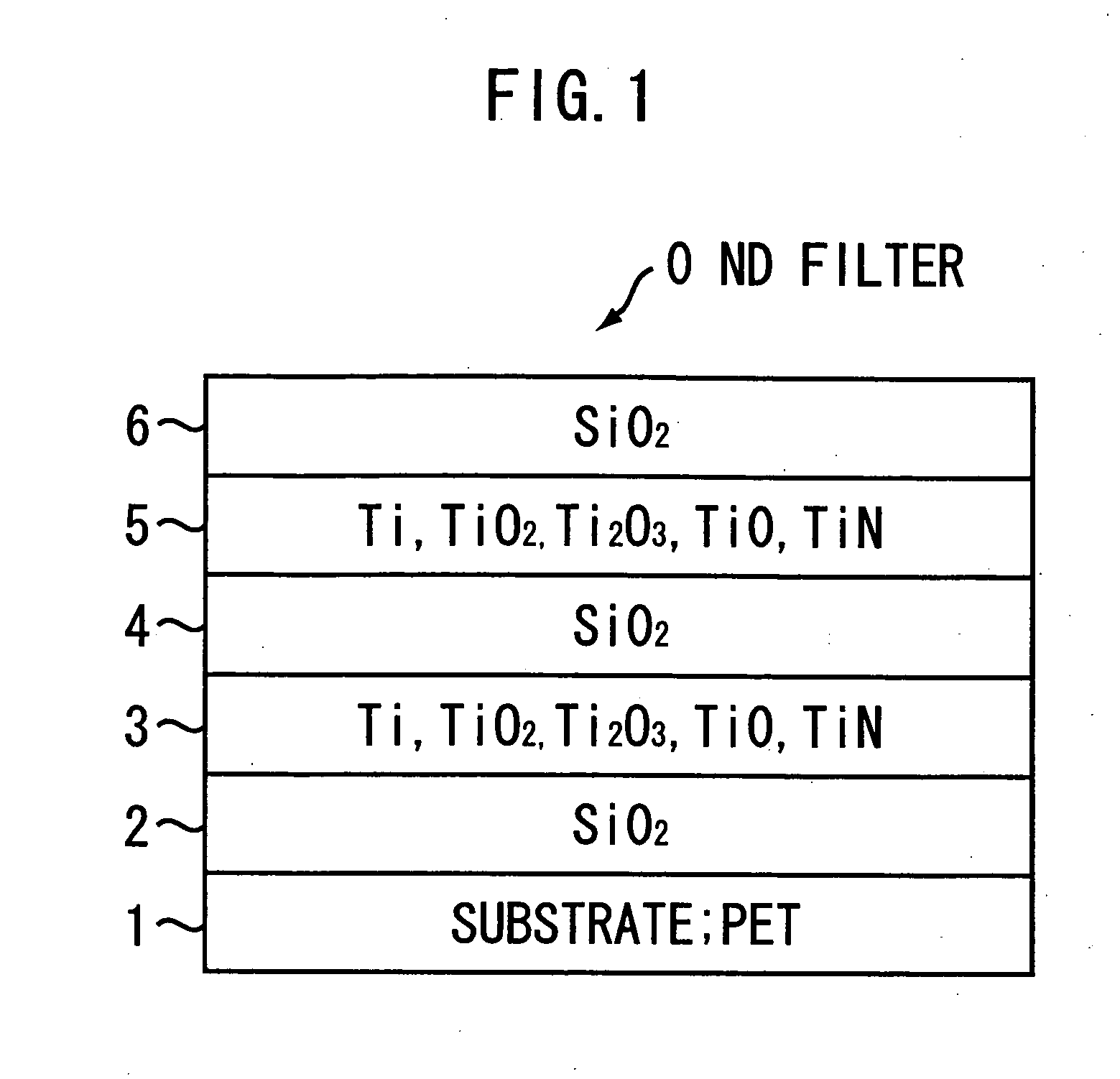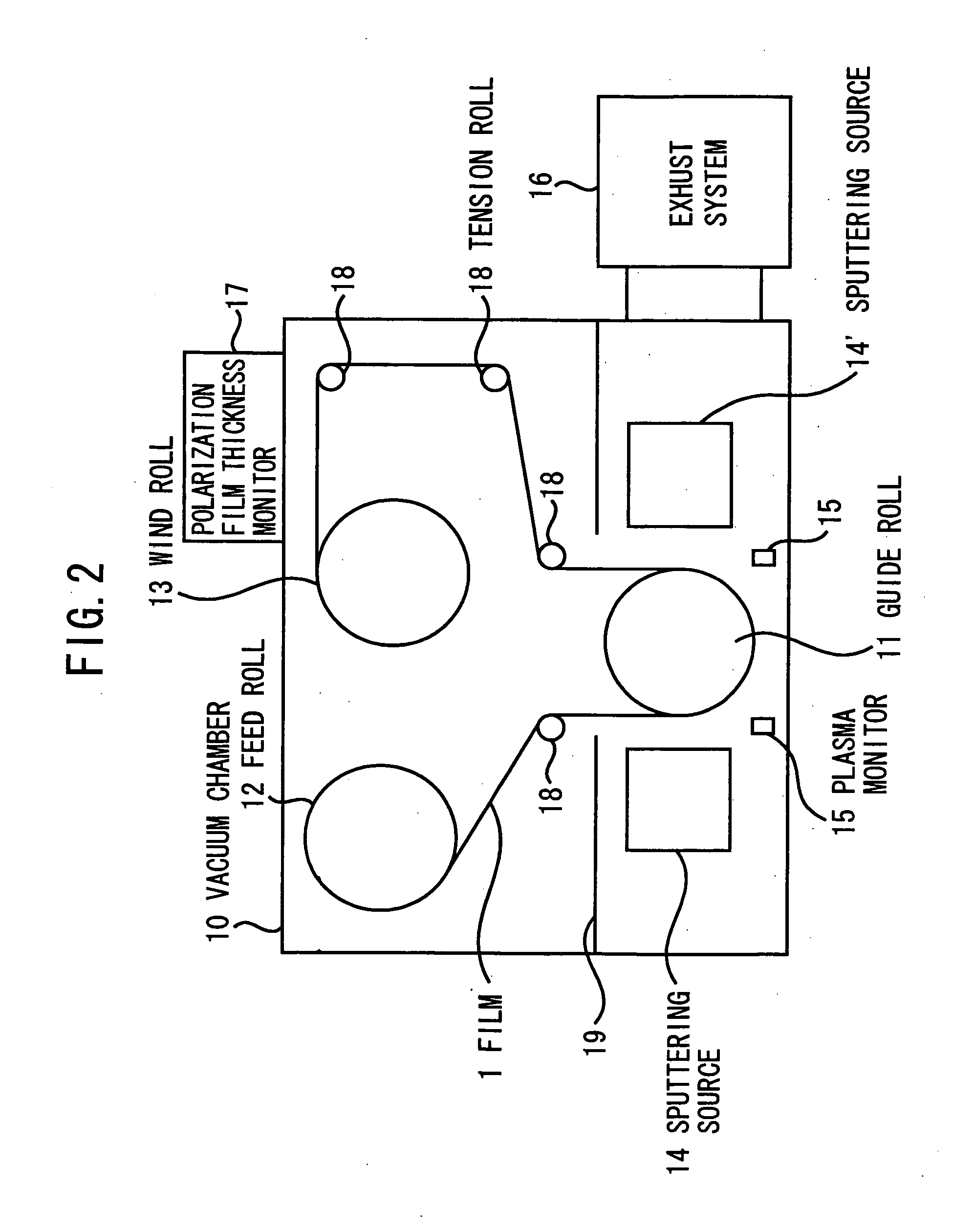ND filter, manufacturing method thereof, and aperture device
a technology of aperture device and nd filter, which is applied in the direction of natural mineral layered products, instruments, transportation and packaging, etc., can solve the problems of high cost of lower-oxide target, deformation of substrate or film, and excessive amount of light entering the light-sensitive surface, etc., to improve the productivity of nd filter, excel in the neutrality in a visible range, and improve the reliability
- Summary
- Abstract
- Description
- Claims
- Application Information
AI Technical Summary
Benefits of technology
Problems solved by technology
Method used
Image
Examples
Embodiment Construction
[0022] Embodiments of the present invention will be described in further detail with reference to the accompanying drawings. FIG. 1 is a schematic sectional view showing the configuration of a thin film ND filter according to the present invention. As shown in FIG. 1, an ND filter 0 is a thin film type formed by laminating light-absorbing films 3 and 5 and dielectric films 2, 4, and 6 on a transparent substrate 1. Characteristically, the transparent substrate 1 is composed of a resin film that can be fed at a constant speed. The light-absorbing films 3 and 5 are composed of a mixture of a metal and a metallic compound. The light-absorbing films 3 and 5 are deposited by sputtering with ambient gas, i.e., a mixture gas of oxygen, nitrogen, and argon, to the constantly traveling film 1 while using a target composed of simple metal or a mixture of metal and metal oxide. The light-absorbing films 3 and 5 provide the extinction coefficient of 0.3 or more in the visible range by controllin...
PUM
| Property | Measurement | Unit |
|---|---|---|
| Temperature | aaaaa | aaaaa |
| Fraction | aaaaa | aaaaa |
| Fraction | aaaaa | aaaaa |
Abstract
Description
Claims
Application Information
 Login to View More
Login to View More - R&D
- Intellectual Property
- Life Sciences
- Materials
- Tech Scout
- Unparalleled Data Quality
- Higher Quality Content
- 60% Fewer Hallucinations
Browse by: Latest US Patents, China's latest patents, Technical Efficacy Thesaurus, Application Domain, Technology Topic, Popular Technical Reports.
© 2025 PatSnap. All rights reserved.Legal|Privacy policy|Modern Slavery Act Transparency Statement|Sitemap|About US| Contact US: help@patsnap.com



